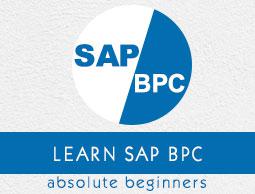SAP BPC - Business Functions
Business Planning and Consolidation performs various business functions such as audit, business process flows, finance statements and reporting, and work status.
Various inbuilt functions are provided to perform these functions.
Currency Conversion
Currency conversion is required if your monetary figures are present in more than one currency in your application set. If app set contains monetary figures in single currency, in that case you don’t need a rate application, currency time dimensions, etc.
If most of your data is entered in one currency and you have only few figures in other currency, this can be handled by creating duplicate members in entity dimension. In this case, you can duplicate few entities present in foreign operations to separate local currency from translated amounts.
Example − The US corporate mostly deals in the US but also has few subsidiaries functioning in other countries like Canada and Mexico.
Simple Conversion Requirements
There should be rate application where you store the exchange rates. You should have an account dimension, which includes RATETYPE. Then Entity dimension should include a property CURRENCY. FXTRANS logic should be available and DEFAULT logic should include a call to FXTRANS logic. Entity dimension should include the property TRANSALATE_TO.
Complex Currency Conversions
There should be rate application where you store the exchange rates. Application should contain a CURRENCY type dimension. There should be property REPORTING for the CURRENCY dimension. Entity dimension must include the property CURRENCY. Account dimension must include property RATETYPE. FXTRANS logic should be available. DEFAULT logic should include a call to FXTRANS logic.
Selecting Correct Rate
All valid rate types corresponds to an account of RATE application and belongs to GROUP FX Rate. If there is any account which is not part of this group, it will be multiplied by a factor 1. You can also define a special case NOTRANS, which results in an account being ignored during the translation.
Cross-rate translation includes multiplying the amount in local currency by ratio between the rate of destination currency and the rate of source currency. Using this, application can use only one table of rates for translating any source currency to destination currency.
You can also define the following default translations using business rules −
Intercompany Eliminations
To perform currency conversion and intercompany eliminations, you need a dimension type - Intercompany dimension (I). To execute intercompany elimination, an application should have the following −
- Dimension Type “I” for intercompany elimination.
- Dimension ”I” should include a property ENTITY.
- Account dimension should include the property ELIMACC.
- Entity dimension should include the property ELIM.
- You should set the appropriate business tables.
- There should be DPT package to execute intercompany logic.
| Dimension |
Property |
Length |
Content |
| Account |
ELIMACC |
20 |
Valid account |
| Entity |
ELIM |
1 char |
It contains ‘Y’ or blank |
| Intercompany |
Entity |
20 |
Entity Id w.r.t Intercompany member |
| Currency |
Reporting |
1 |
‘Y’ or blank |
Default elimination logic performs the following functions −
- Checks all base level entities where ELIM<>Y.
- Restricts currency dimension to all reporting currencies only.
- Removes all accounts to be eliminated into desired plug account.
- Elimination is performed below first common parent in “elimination entity”.


